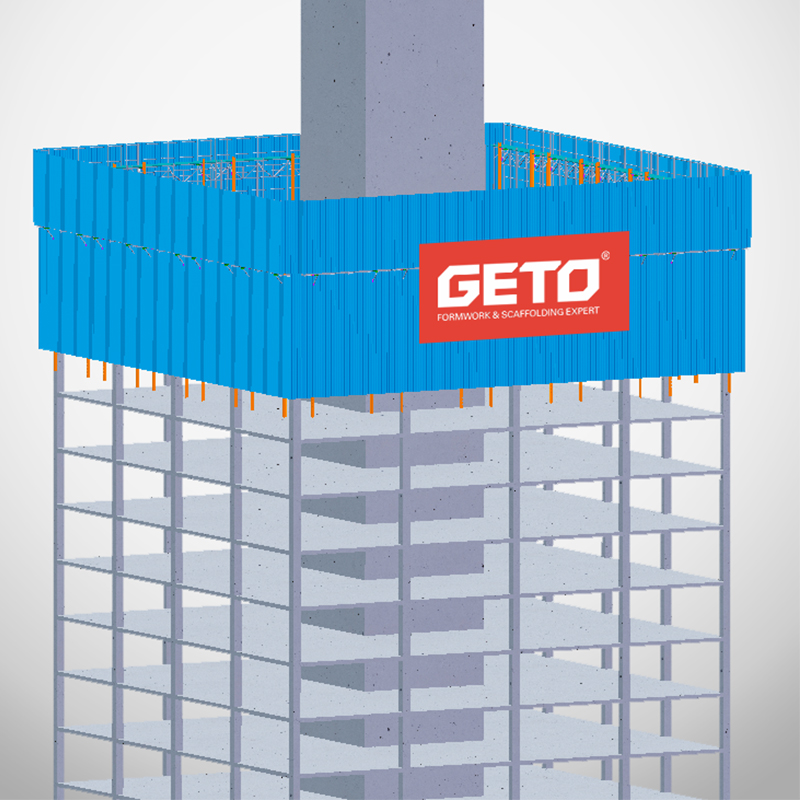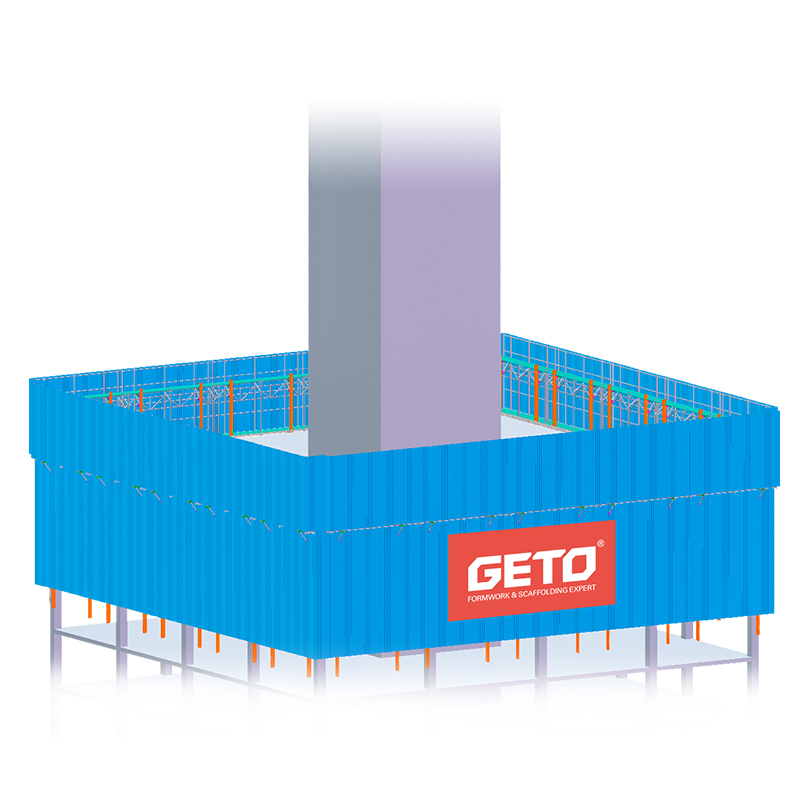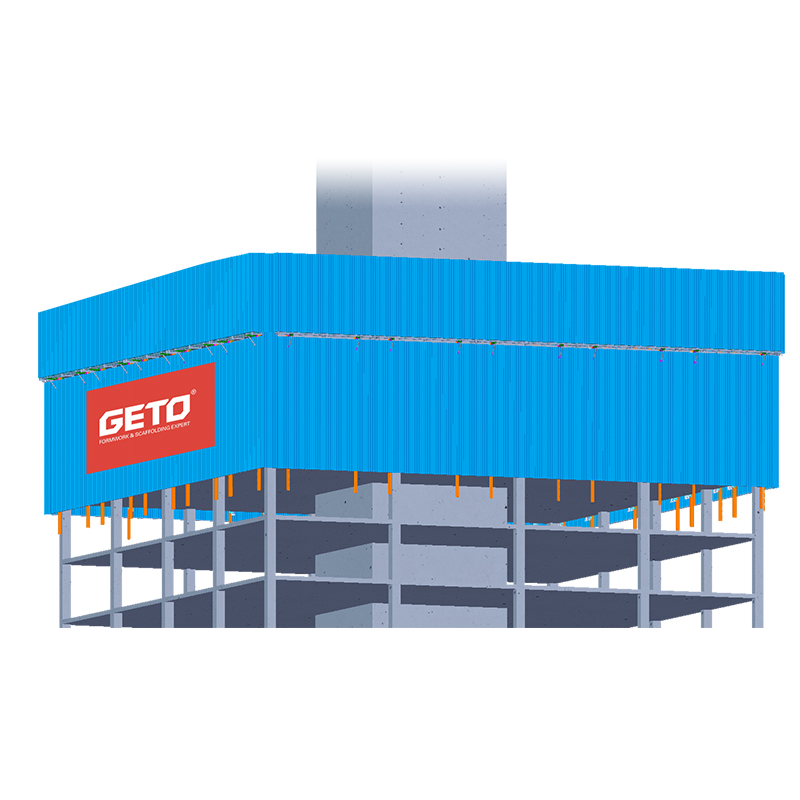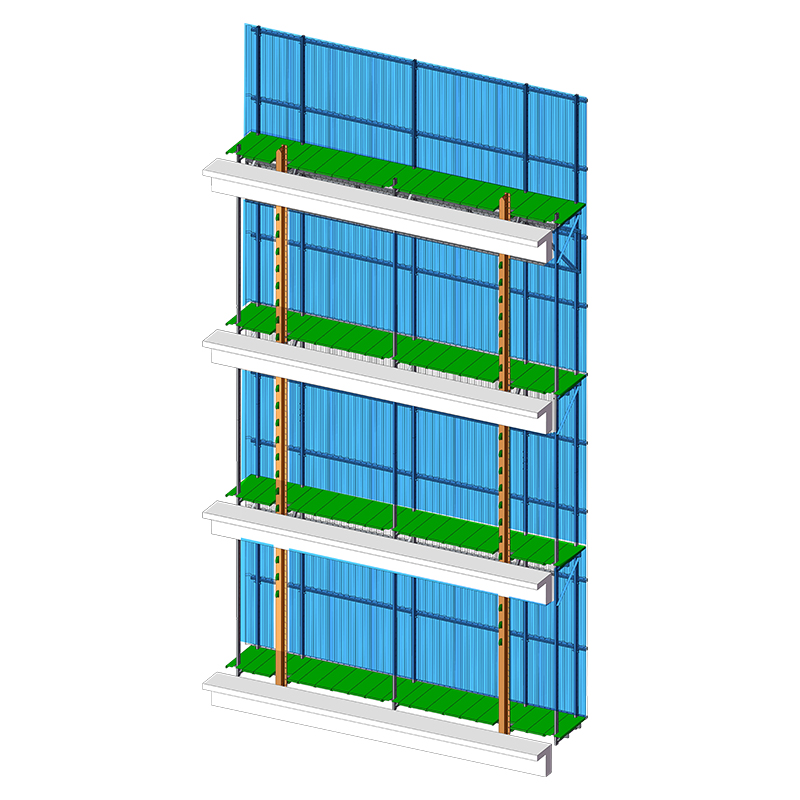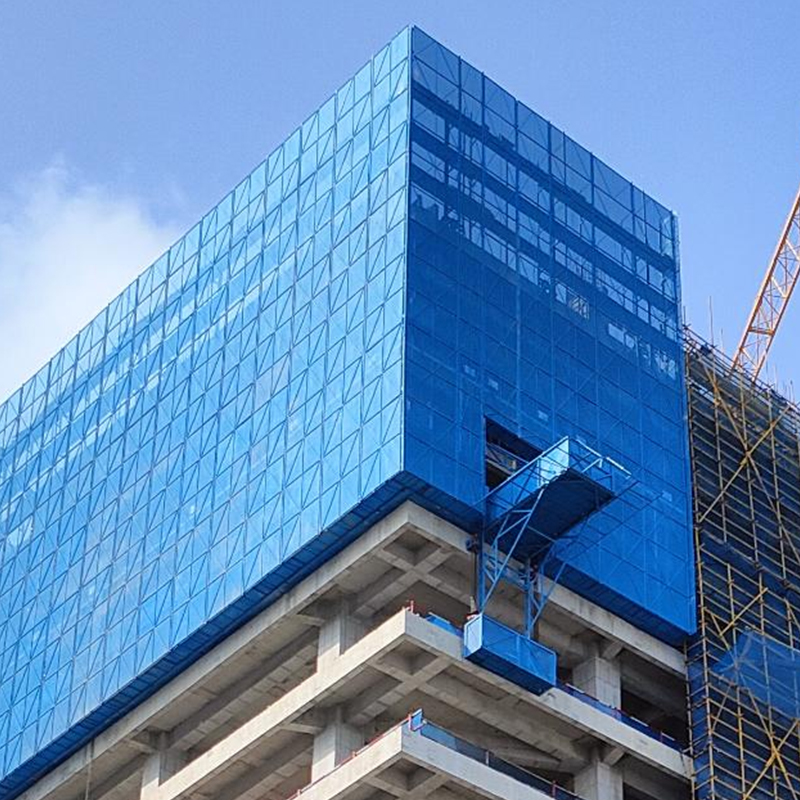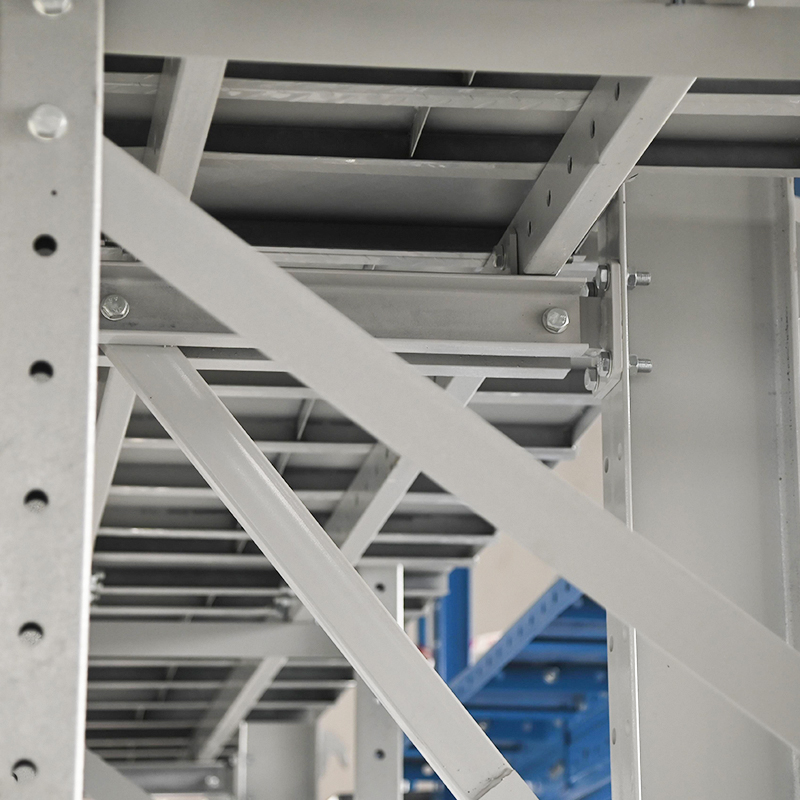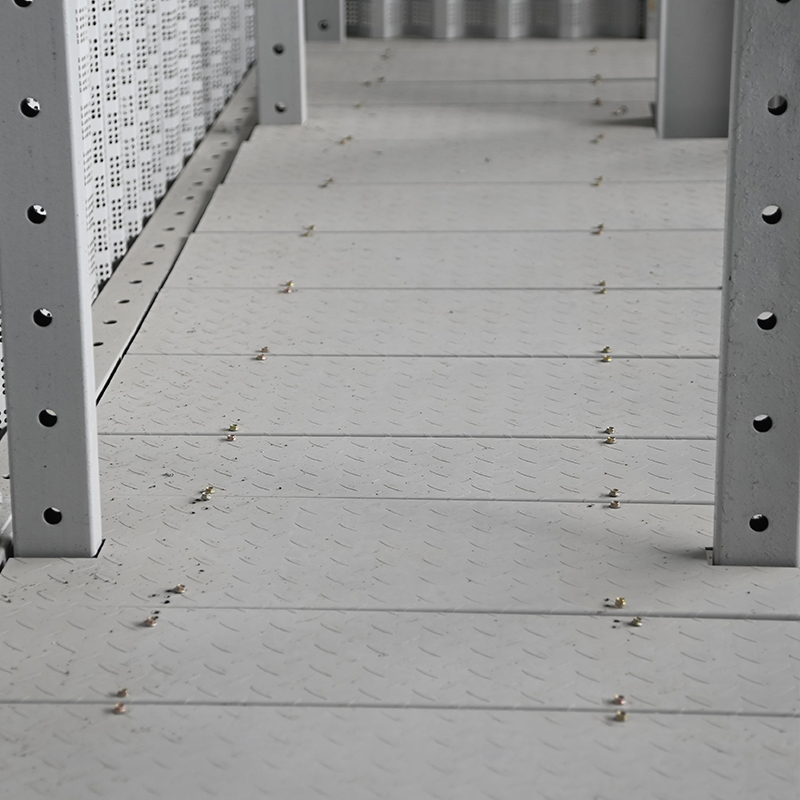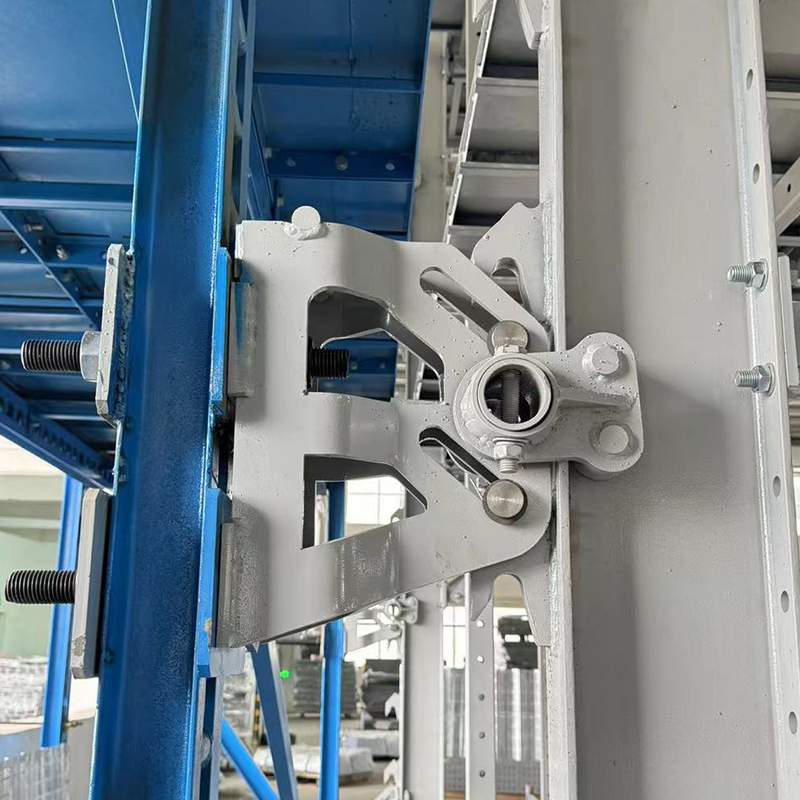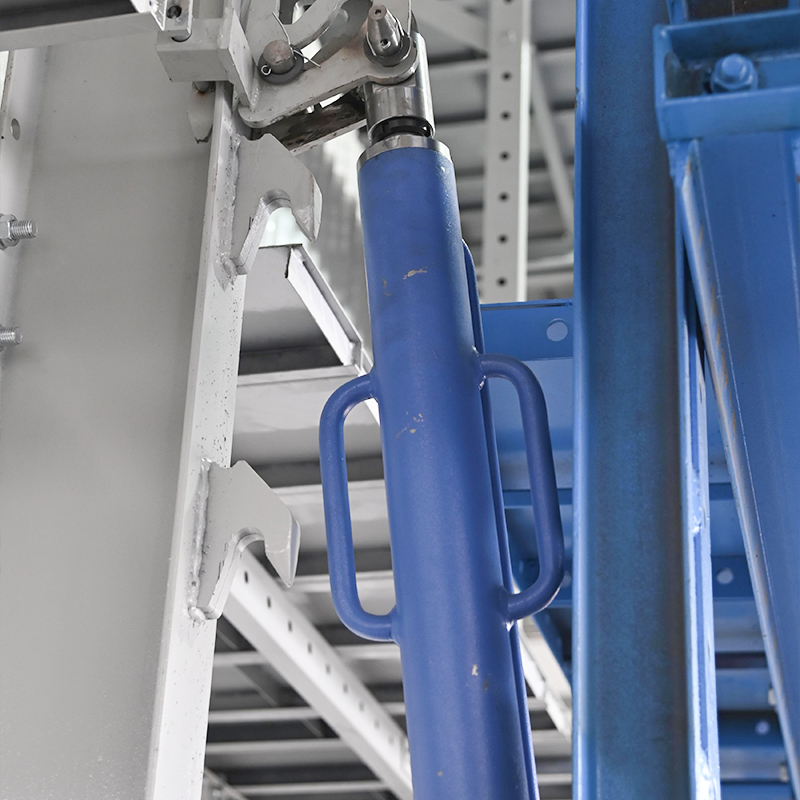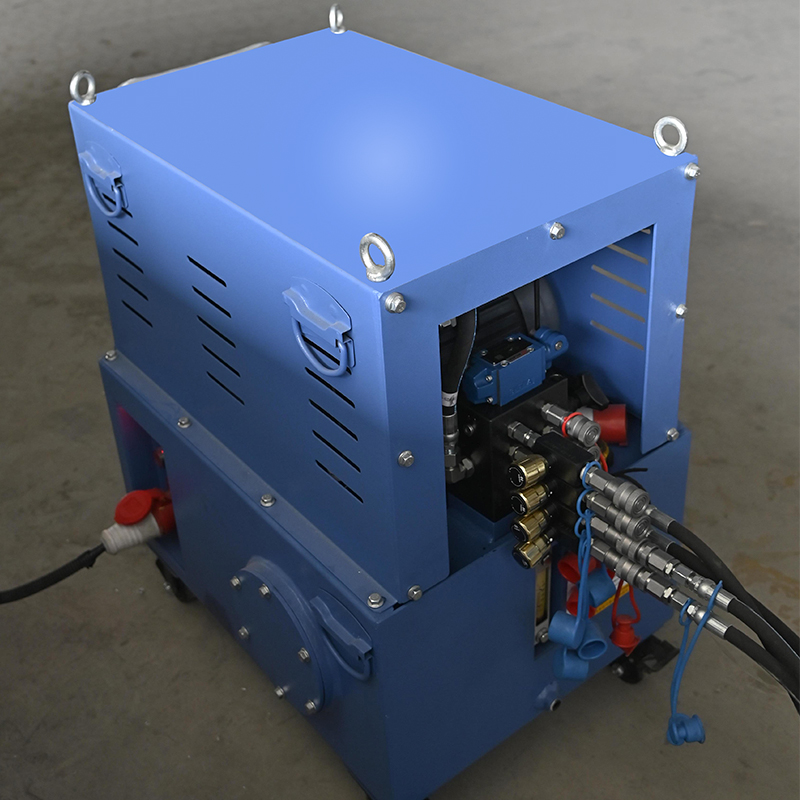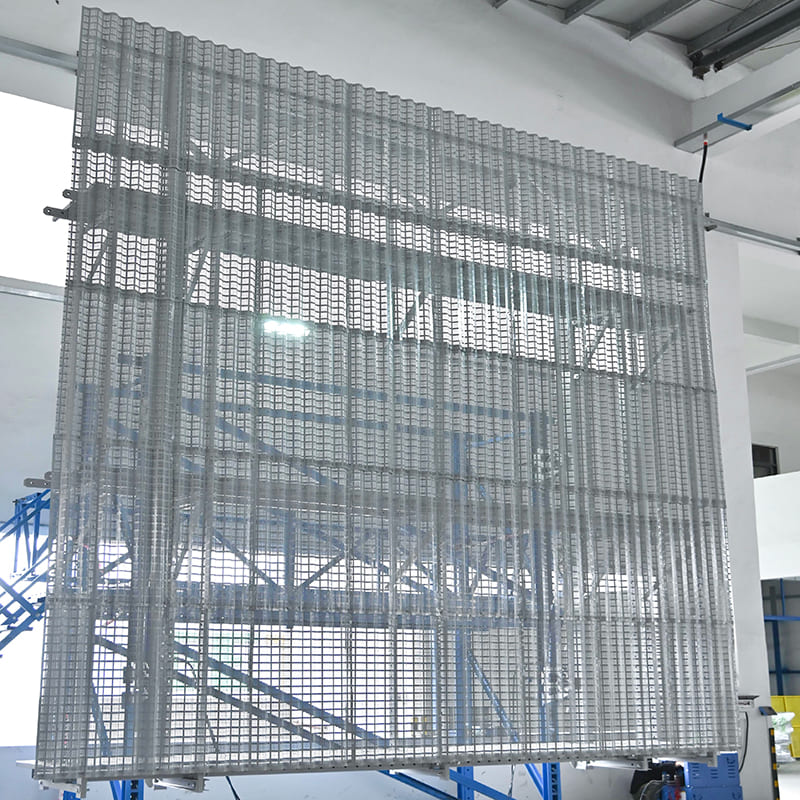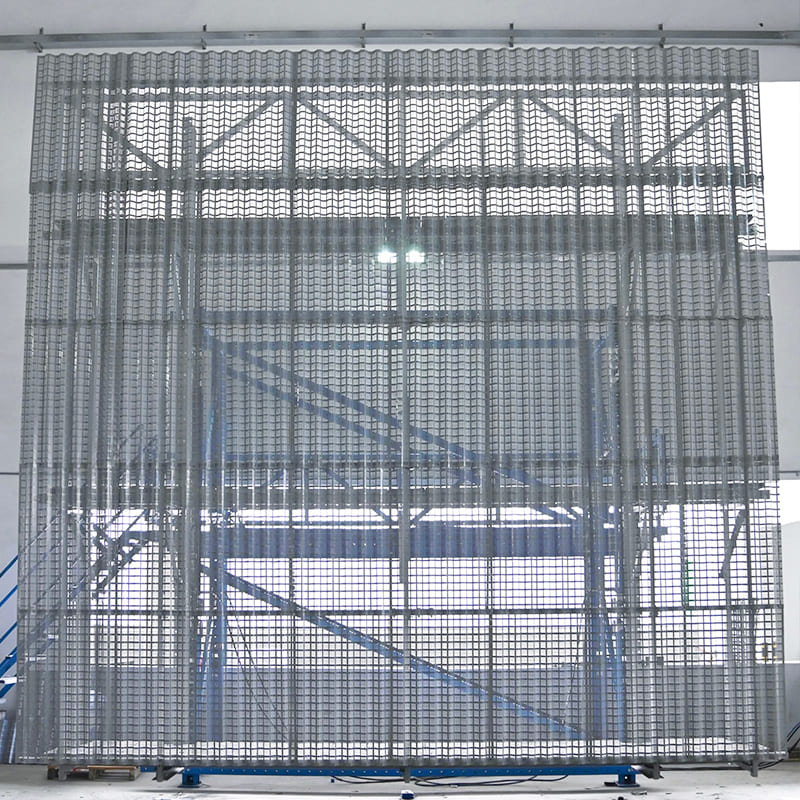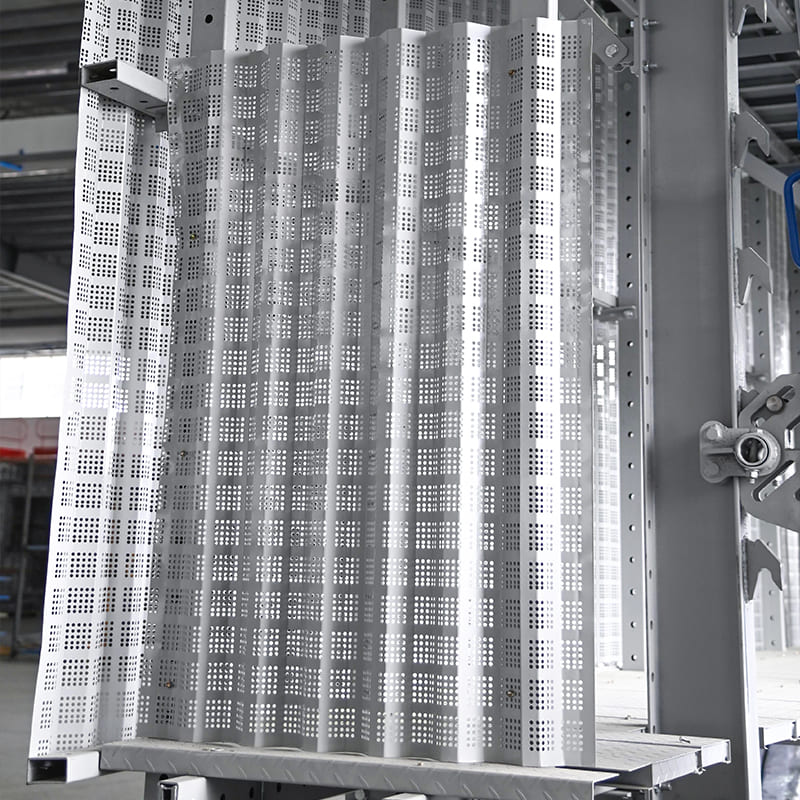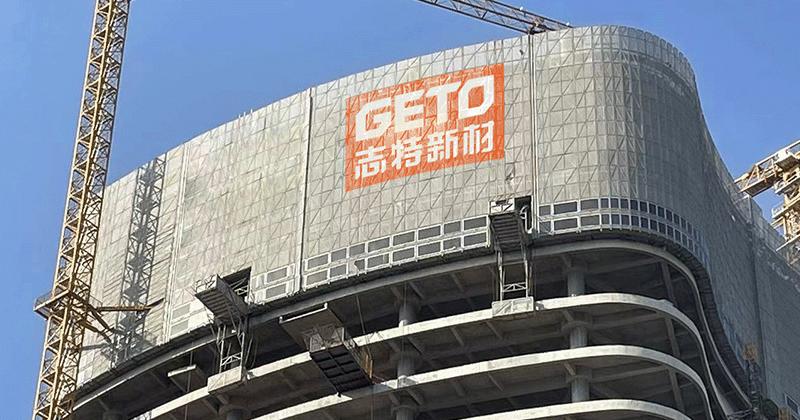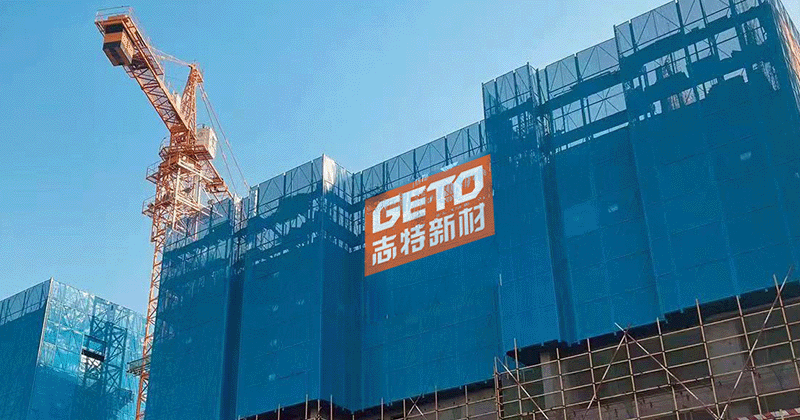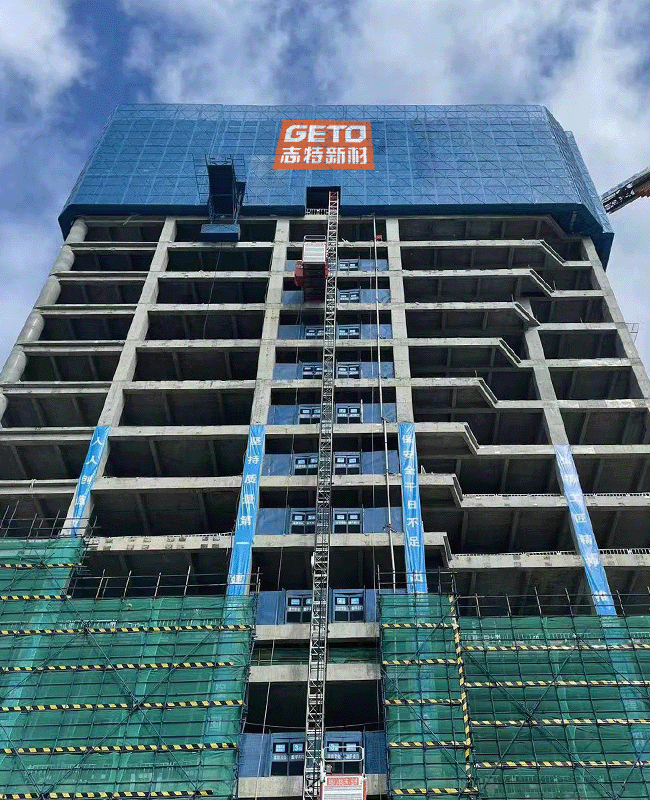Formwork Systems
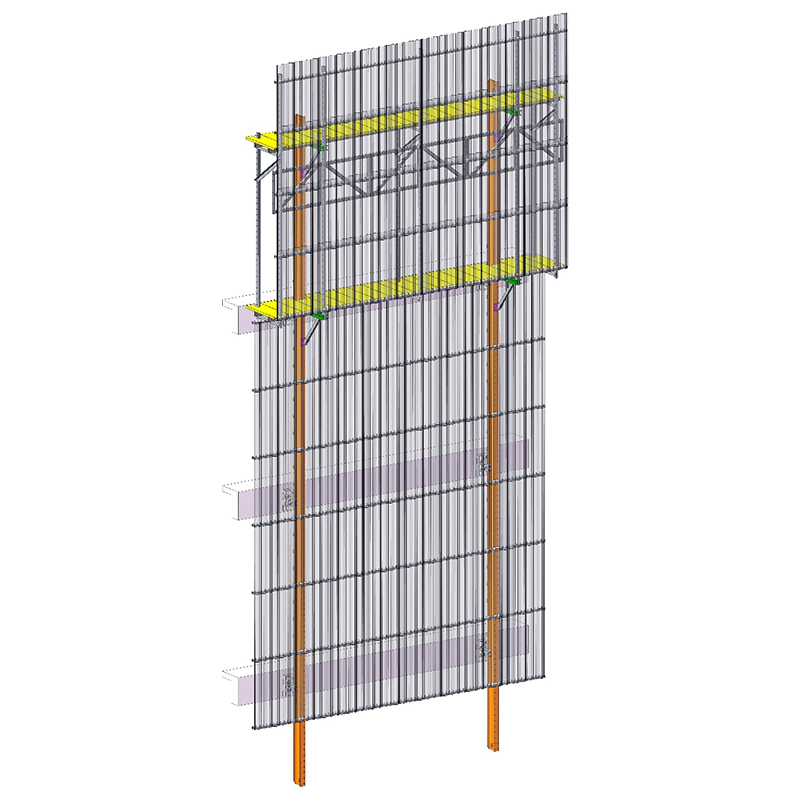
Protection Screen for Commercial Building
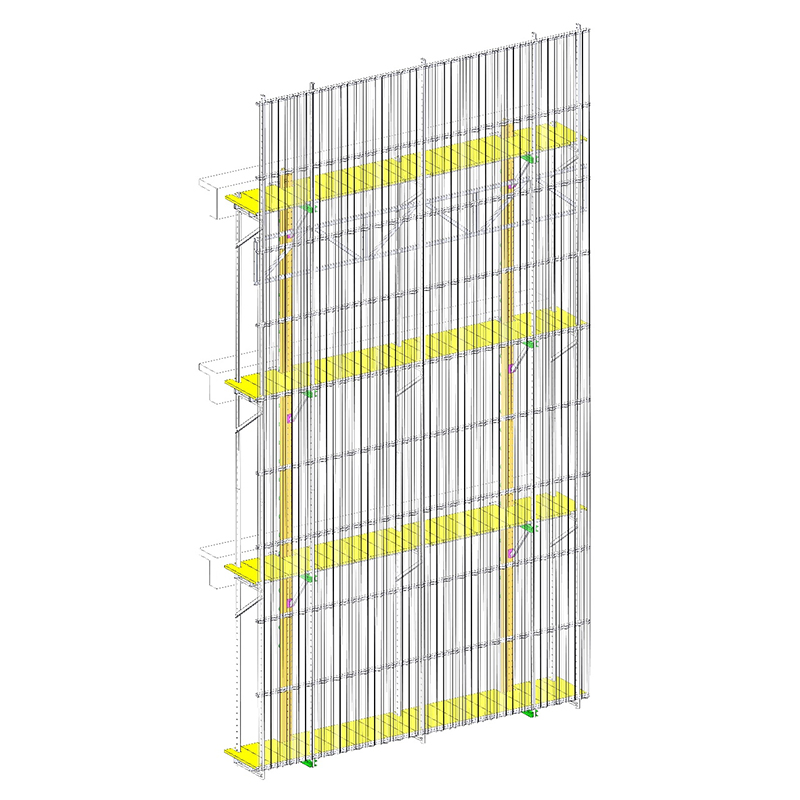
Protection Screen for Residential Building
Advantages
1. High safety
(1) High wind resistance
Capable of withstanding a maximum wind load of 9 levels without extra reinforcement. Additional reinforcement is needed for wind loads beyond level 9.
(2)Fall arrest
Fall arrest devices attached during climbing are independent, minimizing safety issues resulting from operational errors.
Protection against personnel and items being dropped is ensured by full sealing, including guide rails, corners, and protruding parts.
All components undergo rigorous testing, including extreme loads and falls, to ensure safety in extreme conditions.
2. Higher productivity and cost efficient
(1) Strong universality of components for easy management: Main components do not exceed 10 types, achieving a universal compatibility rate of 95%6 or higher.
(2) Hydraulic drive system: Compared to conventional protection platform using electric hoists and electronicallycontrolled, the cost is lower.
(3) Reliable, maintainable, and easy to operate.
(4) Lower overall cost: Lower costs for disassembly, transportation, and labor due to the lightweight frame compared to regular steel climbing platforms.
3. Multi-functional
(1) Suitable for diverse shapes and heights of structure. Adjustable floor supports permit useon facades with both varying and constant inclinations.
(2) Platform boards and sealed flaps can align withfloorlevels.


